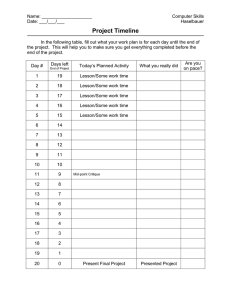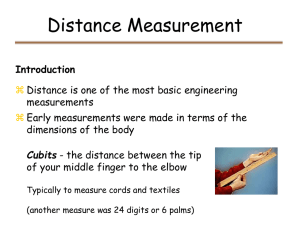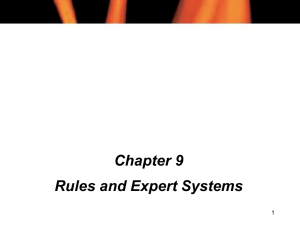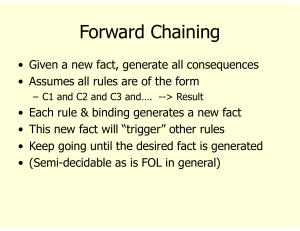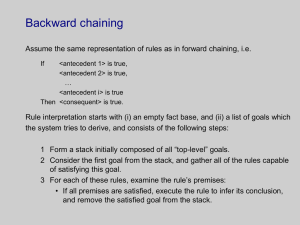A. Distance is one of the most basic engineering... B. Early measurements were made in terms of the...
advertisement
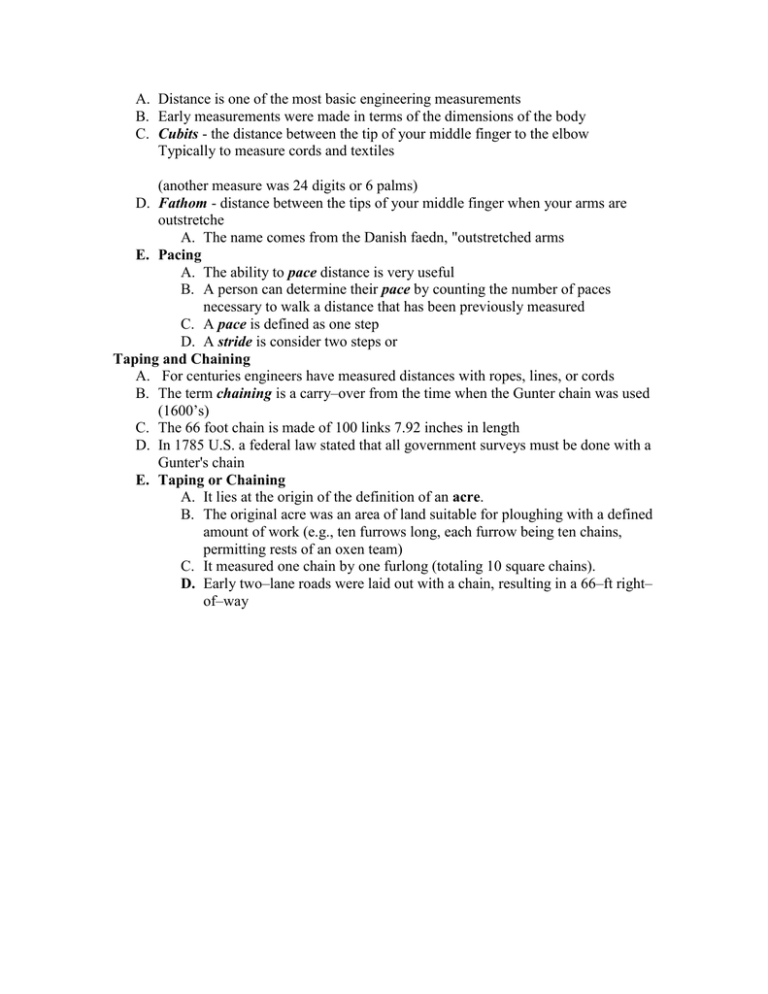
A. Distance is one of the most basic engineering measurements B. Early measurements were made in terms of the dimensions of the body C. Cubits - the distance between the tip of your middle finger to the elbow Typically to measure cords and textiles (another measure was 24 digits or 6 palms) D. Fathom - distance between the tips of your middle finger when your arms are outstretche A. The name comes from the Danish faedn, "outstretched arms E. Pacing A. The ability to pace distance is very useful B. A person can determine their pace by counting the number of paces necessary to walk a distance that has been previously measured C. A pace is defined as one step D. A stride is consider two steps or Taping and Chaining A. For centuries engineers have measured distances with ropes, lines, or cords B. The term chaining is a carry–over from the time when the Gunter chain was used (1600’s) C. The 66 foot chain is made of 100 links 7.92 inches in length D. In 1785 U.S. a federal law stated that all government surveys must be done with a Gunter's chain E. Taping or Chaining A. It lies at the origin of the definition of an acre. B. The original acre was an area of land suitable for ploughing with a defined amount of work (e.g., ten furrows long, each furrow being ten chains, permitting rests of an oxen team) C. It measured one chain by one furlong (totaling 10 square chains). D. Early two–lane roads were laid out with a chain, resulting in a 66–ft right– of–way
